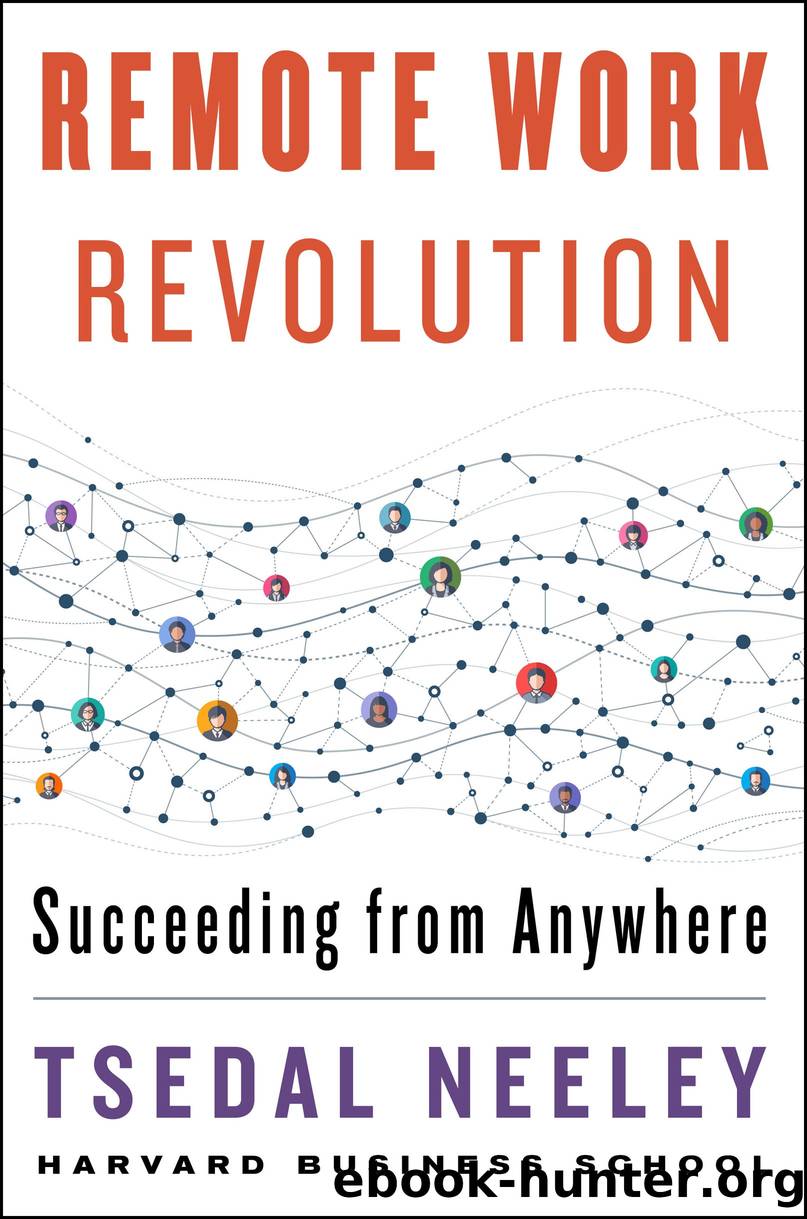Remote Work Revolution by Tsedal Neeley

Author:Tsedal Neeley
Language: eng
Format: epub
Publisher: Harper Business
Published: 2021-02-05T00:00:00+00:00
Set Digital Norms
Remote teams establish norms that identify which digital communication platforms are most appropriate for certain forms of correspondence. For example, email might be deemed most suitable for formal but non-urgent requests, while instant mobile messaging applications might be more appropriate for a less formal but more urgent request.
Phone calls can be used for quick check-ins. Even if office environments are set up to support team membersâ accessibility for quick one-on-one chats or huddles, not every collocated agile team works in such congenial architectural settings. Especially if people are shifted from team to team as projects demand, they may be located down the hall from one another. Decades ago, before mobile phones came on the scene, employees used a corporate desk phone to check in with a team member located two floors above or three floors down. Digital technology ushered in chat rooms and instant messaging for communicating about informal matters that did not necessitate a walk down the hall and a knock on a team memberâs cubicle for an informal check-in.
Working remotely, using oneâs personal mobile phone to call a team member becomes a replacement for the quick cubicle check-in, with the slower and more laborious texting again relegated to matters that require little to no back-and-forth discussion. Especially if working from home involves young children, and people are sitting in front of their computer screens wearing noise-cancelling headphones, itâs often easiest to make a quick, spontaneous call.
Because virtual communication can occur at any hour of the day or night, whereas face-to-face interaction at an office is bounded by more standardized work hours, managers need to establish guidelines on when to communicateâand more important, when not to communicateâin order to preserve the boundaries between work and nonwork responsibilities.
Download
This site does not store any files on its server. We only index and link to content provided by other sites. Please contact the content providers to delete copyright contents if any and email us, we'll remove relevant links or contents immediately.
| Automotive | Engineering |
| Transportation |
Whiskies Galore by Ian Buxton(40305)
Introduction to Aircraft Design (Cambridge Aerospace Series) by John P. Fielding(32332)
Small Unmanned Fixed-wing Aircraft Design by Andrew J. Keane Andras Sobester James P. Scanlan & András Sóbester & James P. Scanlan(32137)
Craft Beer for the Homebrewer by Michael Agnew(17440)
Turbulence by E. J. Noyes(7033)
The Complete Stick Figure Physics Tutorials by Allen Sarah(6632)
Kaplan MCAT General Chemistry Review by Kaplan(6045)
The Thirst by Nesbo Jo(5779)
Bad Blood by John Carreyrou(5763)
Learning SQL by Alan Beaulieu(5400)
Weapons of Math Destruction by Cathy O'Neil(5032)
Man-made Catastrophes and Risk Information Concealment by Dmitry Chernov & Didier Sornette(4731)
iGen by Jean M. Twenge(4695)
Digital Minimalism by Cal Newport;(4512)
Life 3.0: Being Human in the Age of Artificial Intelligence by Tegmark Max(4497)
Audition by Ryu Murakami(4093)
1,001 ASVAB Practice Questions For Dummies by Powers Rod(4034)
Electronic Devices & Circuits by Jacob Millman & Christos C. Halkias(4021)
Pale Blue Dot by Carl Sagan(3997)
